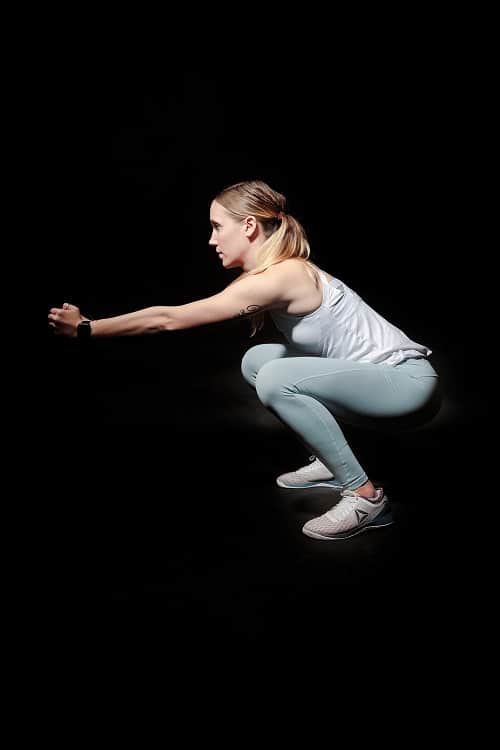
Back pain can be a problem for many of us, especially as we age. Better than alleviating it with harmful chemicals, or consulting an expensive chiropractor is to not need any of these things at all. Maintaining good posture is central to preventing back problems later in life.
Furthermore, optimal spinal alignment will improve our mobility and muscular engagement, contributing to a better athletic ability and an overall improved quality of life. Proper alignment is not the same for all people, after all, everyone is different.
That is not to say that most people can’t achieve an optimum posture for a pain-free back by following the same exercise routines. However, let’s first take a look at what NOT to do.
What doesn’t work
Most people find great satisfaction in cracking their backs and believe it has a beneficial effect on the spine. While it has been shown that it can relieve tension between the vertebrae in moderation, doing it excessively has the potential to cause more harm than good.
The most common theory explaining why our joints crack stipulates that the popping sound comes from gasses like nitrogen or hydrogen trapped between the vertebrae and released when we rotate our backs around the central axis. If done too often, this will weaken the joints, potentially causing back problems in old age.
Another often applied solution that can lead to potential negative repercussions are posture aids. There’s little doubt that these can help over a short period, such as when recovering from an injury, but extended use can weaken our back muscles because of the additional support. Back braces and various other posture aids should not be seen as anything else than temporary fixes.
There’s a certain degree of risk in wearing any mechanical device that alters our body attitude, especially if not properly adjusted. It is never recommendable to just buy a posture aid and put it on as you see fit. Always consult a medical professional on how to properly wear the brace.
With our duty to warn the reader somewhat fulfilled, let’s see what exercises will work to help us achieve good posture.
Neutral spine for the optimal seated position
This exercise is intended to help us find our optimal spinal alignment and stay there.
We start by sitting with our legs in front of us, with a straight back, and an ever so slightly bent forward torso. Hips should be a little distanced at a very slight angle and hands should hover above the legs for proper equilibrium.
Now we imagine we are trying to “elevate” our head as if a rope is pulling us from the top of our cranial box.
We breathe and pull our jawline back so that ears align over shoulders, ribs, and hips. We should see the three curvatures of the spine in profile in a mirror. As we inhale, we try to “lengthen” our spine as described above, while tightening our muscles when exhaling. This should be repeated a few times.
Turned-out squats

This is good exercise for both your back and the muscles around the knees. Unlike with a regular squat where range of motion is more important, in the turned-out variety an emphasis is placed on alignment.
Before attempting any squat, we should take care that our core and feet are in a symmetrical position, the back and neck are straight, forming a continuum. For proper balance, our toes should point towards two and ten o’clock and hands should be held close to the body.
Our weight should be distributed evenly along the soles of our feet before bending our knees. How much we can bend naturally differs from person to person, but don’t overdo it! Knees should not pass the line described by our toes.
Keeping your knees aligned over the centerline of the foot engages both the inner and outer thighs. Thighs should point outwards and shins inwards.
While keeping balance by leaning forward, engage your gluteus as if you were trying to sit. Returning to the starting position, engage your hamstring tendons by pushing against the ground. Try to keep your back as perpendicular to the ground as possible, this will strengthen the muscles around the spine.
The upright lunge

One of the more popular exercises out there, the upright lunge rivals push-ups in the number of muscle it engages. It strengthens the gluteus, the biceps, the back muscles if done correctly (no slouching!) and it is also healthy for the spine.
Sit on one knee with your back as straight as possible. Your hands should be stretched forward for equilibrium, and you might want to hold on to something like a chair or table to avoid losing your balance.
Your sheens should be perpendicular to the ground and your back keen should fall directly under your hips. Try to go for a right angle as much as possible, with your legs and arms describing ¾ of a… certain symbol.
Now try to lift the front knee a couple of inches while supporting yourself with the toes of the other one. Repeat this some four-dozen times for each leg.
Optimal alignment flat on the floor

Proper spinal alignment is important in getting the most out of each exercise. This means that your head spine and pelvis are aligned in such a way as to give your body the greatest possible reach. The idea behind the exercise is to engage the muscles of your back responsible for stabilizing you on the floor.
You do this by first lying with your feet flat on the ground. Moving your pelvis up and down will help you find your neutral middle point. Like with the sited position, try to “lengthen” your spine by heavily breathing in. This will draw on your spine while in a neutral position.
Now press heavily upon the floor with your upper back, and the curve of your waist should contact the ground as well. The lower back might be slightly lifted. Best way to achieve this is by raising one or both of your legs into the air, so you would need to support their weight with your back. Alternate lifting your legs while maintaining the same posture.
This works better if you try straightening your legs and keeping them as such, but don’t put too much strain on the joints if you have trouble with this.
The three-point alignment drill
This is a pretty straightforward workout for your spine that basically involves flexing various sections of it back and forth. From an upright position and with feet firmly planted on the ground, slowly move your pelvis back and fourth to exercise your lower back.
After whatever number of repetitions you see fit, do the same for your mid spine, which is the section we generally curve while sitting at a computer. Slouch, and then straighten. The upper spine starts at the base of the neck. Try to likewise move it back and forth while also engaging your upper back muscles.
Author Bio: Brittany Elmore is the marketing department manager at Marina del Rey Hospital, a center specialized in spine services, rehabilitation, surgery and recovery.

